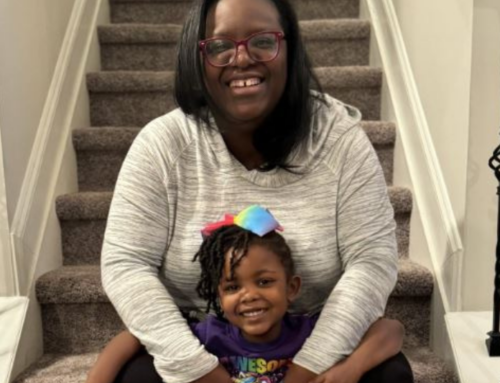This article was originally written by Change Consultant and Content Manager Chyenne Mallinson for the Early Childhood Systems Technical Assistance & Coordination Center (ECS TACC).
The Power of Proximity
As early childhood systems leaders, it is easy to get engrossed in the development of long-term goals, data and quantitative research, and timelines because that is what has traditionally driven systems work. But as leaders begin to understand and work toward infusing equity in their work, it is paramount to take a step back and assess the practices that have long been the essence of systems — practices that have been historically exclusionary and dismissive of the marginalized communities that the system is meant to support. When working to strengthen child-serving systems and support to families and communities, getting proximate to those most impacted by these systems is vital to understanding their needs.
What Does it Mean to “Get Proximate”?
Popularized by social justice activist Bryan Stevenson, the term “get proximate” is a call to action for all leaders to take the time to get close to those experiencing disparities in order to understand the intricacies of their experiences. In his keynote at the 2016 Carnegie Foundation Summit, Stevenson states, “You cannot be an effective problem-solver from a distance; there are details and nuances to problems that you will miss unless you are close enough to observe those details.”
Leading systems change includes the responsibility to be intentional about connecting to and learning from the families and communities being served. Only in this way can systems truly understand what services, support, and practices are needed to drive change for families and communities. To achieve equity, there is power in proximity, and it is not optional.
The Importance of Community Narrative
In early childhood systems, there are usually dominant narratives surrounding the experiences of the populations that are being served — often driven by preexisting biases and structural inequities. It is crucial to replace these narratives with those from families and communities. Agencies, organizations, and individuals must work to not only uplift these community voices but also take the time to hear them and let the information move the work forward.
By listening to those being served, you can learn more about cultural, socioeconomic, relationship, trauma, and accessibility implications that all impact decision-making. Through interviews, focus groups, and story circles, systems leaders can learn directly from families and communities what they need to thrive. In these spaces, the first step is to let them drive the conversation. By stepping back and allowing organic dialogue, you are gathering authentic narratives that contribute to data and shape the work.
As you are listening to the lived experiences of families and communities, ask yourself:
- Do our current goals align with the needs expressed in these stories?
- Are present practices helping or harming families?
- Does the quantitative and qualitative data reflect the information you are hearing?
- How can we use these stories to change the dominant narrative surrounding communities receiving early childhood system support?
- How can we meaningfully engage with these stories?
- How can we continue to provide opportunities for families and communities to inform the work?
Building Trust and Relationships
When getting proximate, it can be discouraging when the community or family seems hesitant or reluctant to share its story. Remember that marginalized communities have been historically excluded, leading to a feeling of distrust of agencies, organizations, and the early childhood and health systems as a whole. Gaining the trust of communities and families is key to providing meaningful and impactful services. This starts with transparency and accountability. Being clear and honest about what your goals are, what families can expect when engaging with you, and taking accountability for areas in which the system has failed communities is conducive to trust-building. When engaging, always ask or gauge their level of comfortability. Meeting families where they are avoids infringing boundaries.
Once trust is earned, relationships can be built. Creating lasting relationships with parents and families increases the likelihood of interaction with systems and improves the collection of data. Getting proximate requires coming together on a human level.
“Go to the people. Live with them. Learn from them. Love them. Start with what they know. Build with what they have. But with the best leaders, when the work is done, the task accomplished, the people will say ‘We have done this ourselves.” – Lao Tzu
Engaging Parents and Community Members as Leaders
There is a fine line between serving and saving. Too often, system leaders and providers make the mistake of creating programs and initiatives with the goal of rescuing people from their own situations. This removes the focus from the community and perpetuates an idea of inferiority, especially when serving oppressed and marginalized populations. Understanding that there is an inherent power dynamic between systems and communities is the first step to avoiding a savior complex and building authentic connections.
To level the balance of power, bring the community members to the table. Engaging parents and community members as leaders not only informs the work but also empowers them to advocate for themselves and their communities. Remember that parent and family leaders are the experts on what their families and communities need to thrive. Inviting parents and community members into the decision-making and strategic planning process can create better and long-lasting outcomes for families, communities, and systems.
When engaging parents and community members as leaders, it is important to avoid tokenism by seeking a diverse group of people from different racial and ethnic, cultural, socioeconomic, and geographic backgrounds. Identify what representation is needed and what gaps need to be filled in order to create effective feedback loops and continuous participation.
Key Equitable Engagement Practices
- Shed assumptions and biases. Let the community tell you who they are and what they need. Learn the historical context of communities to understand why a problem exists and how to address it.
- Get comfortable with discomfort. Getting proximate requires aligning yourself with communities and cultures you may not have previously encountered. Listening to the lived experience of others can be emotional and revealing. Linger in that space and in those feelings to have a better sense of how the system can change outcomes.
- Be user-centered and problem-specific. React to the current needs and issues of families. Systems should be designed to support services that are specific to the experiences of those being served. Understand how services will impact families and what can be done to develop inclusive services.
- Develop standards and expectations around getting proximate. Systems building work is an ongoing process. Agencies, organizations, programs, and systems are constantly adjusting policies, developing new initiatives, and building new systems. Lasting change requires creating standards and expectations that these efforts will include getting proximate with the communities being served and working toward the co-creation of systems that are truly responsive to community needs. This is not something that should just be done as part of system building or equity initiatives but become part of the routine work of early childhood systems and programs.
Resources:
Fernandez, L. (2016, April 21). Empathy and Social Justice: The Power of Proximity in Improvement Science. Carnegie Foundation.
Seattle Neighborhoods. (n.d.). Strategies for Equitable Engagement.
The White Savior Complex. (n.d.). Black Equality Resources.
https://blackequalityresources.com/white-savior-complex/
Why Am I Always Being Researched? (2018). Chicago Beyond.




